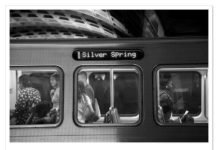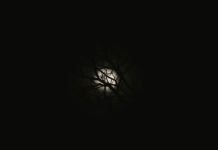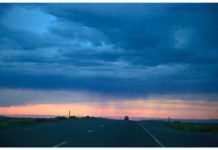
산수유 씨앗
-전우익 선생의 휠체어를 밀며
2003년의 뜨거운 여름,
전 선생이 사고로 대구의 한 병원에 입원해 있을 때
난 며칠 동안 그늘만 찾아다니며 휠체어를 밀었다.
예전 봉화 청량사를 오를 때는 그의 등을 밀었다.
선생은 질문이 곧 성찰에 이르는 길인 듯 줄곧 물었다.
왜 한국에는 도연명 같은 혁명적인 시인이 없는가.
왜 권정생 같은 동화작가가 다시 나오지 않는가.
왜 쌀알 한 톨이 이 세상에서 가장 무거운가.
왜 벼꽃이 피는 걸 개화라 하지 않고 ‘출수’라 부르는가.
왜 포도나무는 자꾸 사막 멀리 뿌리를 뻗어가는가.
왜 솔개는 바위에 부리를 부수고 발톱을 뽑아버리는가.
왜 큰 것은 작은 것을 겸하지 못하는가.
왜 세상은 인간이 직립한 이후부터 비극이 생기는가.
9년 전 세상을 떠난 선생의 질문이 아직도 귀에 맴돈다.
그의 책 ‘혼자만 잘 살믄 무슨 재민겨’에도 나오지만
무슨 선거 때만 되면 노란 산수유 이야기가 떠오른다.
어느 날,
전 선생이 산수유 묘목을 밭에 심고 있는데
이웃들이 그게 언제 커서 돈이 되겠느냐며 혀를 찼다.
5년 후 심은 나무에서 노란 꽃이 몇 개 달리더니
10년이 지나자 노란 숲으로 변해 향기가 마을에 진동했다.
선생은 산수유 묘목을 가꿔 이웃들에게 나눠주었다.
간혹 묘목 대신 씨앗을 달라는 사람들도 있었다.
이 대목에서 전 선생이 빙긋이 웃으며 내게 물었다.
자네는 씨앗과 묘목 중 어느 것을 받겠느냐고….
나도 빙긋이 웃으며 아무것도 받지 않겠다고 대답했다.
토양이 너무 나빠 먼저 땅부터 완전히 갈아엎지 않으면
아까운 산수유 씨앗만 버리게 될 거라고 덧붙였다.
전 선생이 다시 빙긋이 웃으며 고개를 끄덕였다.
병원 뜨락의 그늘에 저녁 어스름이 깔린다.
어둠과 빛이 교차하자 모든 것들이 지워져간다.
생사의 안팎이 이 한순간의 박명 같은 것일지도 모른다.
이젠 어제 씨앗이었던 저 나무들도 내일은 재로 변하리라.
그 잿더미에서 쌀알 같은 벼꽃들이 피어나기도 하리라.
두 바퀴를 두 손으로 직접 굴리는 이 휠체어는
천천히 손에 힘을 주는 만큼만 바퀴자국을 남긴다.
Cornelian Cherry Seed
—While Pushing Mr. Jeon U-ik’s Wheelchair
During the hot summer of 2003,
When Mr. Jeon was hospitalized in Daegu after an accident,
I pushed his wheelchair for a few days, trying to find some shade.
I had once pushed his back while we climbed up a hill to Cheongnyang Temple in Bonghwa.
Then he kept asking questions, as if asking questions was the way to enlightenment:
Why has Korea never had a revolutionary poet like Tao Yuanming?
Why has there not been a children’s story writer like Kwon Jeong-saeng after him?
Why is a grain of rice the heaviest thing in the world?
Why do we call the flowering of rice “coming out in ears” instead of “blooming”?
Why does a grapevine spread its roots on and on toward the desert?
Why does a kite break its own beak and pull out its own talons on a rock?
Why can something big not be something small at the same time?
Why did the world turn tragic from when human beings stood up straight?
Why, why, why…
The questions still ring in my ears nine years after his passing.
I remember the story of yellow cornelian cherries whenever an election approaches—
a story that is included in Mr. Jeon’s book What Fun Is It to Live Comfortably Alone?
One day,
While Mr. Jeon was planting cornelian cherry saplings on his farm,
His neighbors clucked their tongues, wondering when the saplings would grow big enough to make money.
Five years later, a few yellow flowers bloomed,
And ten years later, they turned into a yellow forest, filling the entire village with fragrance.
Mr. Jeon nurtured and distributed cornelian cherry saplings to his neighbors.
Occasionally, some of the people wanted seeds instead of saplings.
Grinning meaningfully at this point of the story, he asked me,
Which would you prefer: seeds or saplings?
I also grinned, and said that I would want neither,
Adding that they would be wasted
Unless I plowed the soil completely, as the soil was in bad shape.
Grinning again, Mr. Jeon nodded.
Dusk descends onto the shaded hospital garden.
As the darkness and light cross each other, everything is being erased.
The in- and outside of life might be like the vague light of this moment.
Those trees, which were seeds yesterday, will become ashes tomorrow.
Rice flowers might bloom, like grains of rice, from that heap of ashes.
This wheelchair that you can move by rolling the two wheels with your hands
Leaves tire tracks only as deep as the strength you deliberately apply to the wheels.

이산하 시인은 민주화운동청년연합 선전국에서 활동하던 1987년 3월, 사회과학무크 <녹두서평> 창간호에 ‘제주 4·3사건’의 학살과 진실을 폭로하는 장편서사시 <한라산>을 발표해 엄청난 충격과 전율을 불러일으켰다.
Translated by 전승희 Seung-Hee Jeon
(literary critic and translator, editor of Asia: A Magazine of Asian Literature)










